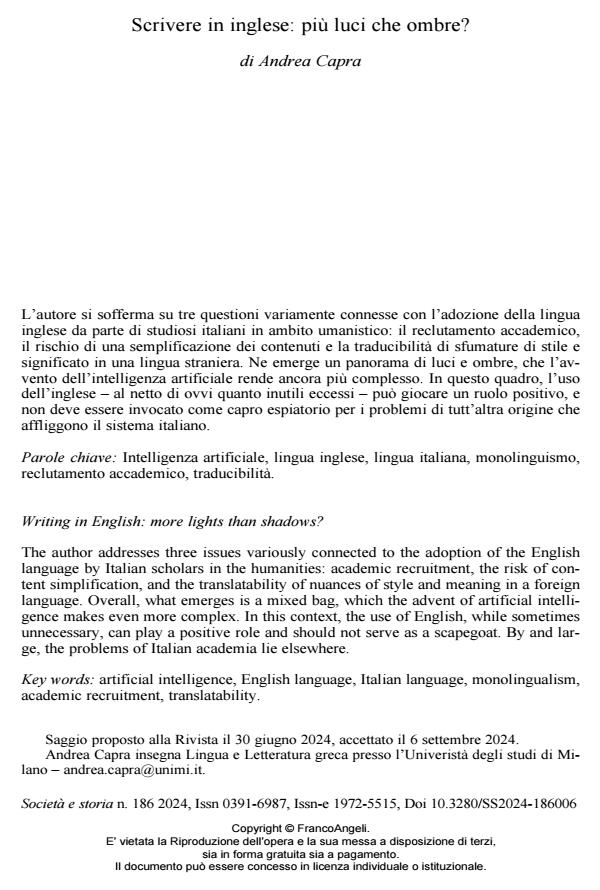Writing in English: more lights than shadows?
Journal title SOCIETÀ E STORIA
Author/s Andrea Capra
Publishing Year 2024 Issue 2024/186
Language Italian Pages 7 P. 807-813 File size 98 KB
DOI 10.3280/SS2024-186006
DOI is like a bar code for intellectual property: to have more infomation
click here
Below, you can see the article first page
If you want to buy this article in PDF format, you can do it, following the instructions to buy download credits

FrancoAngeli is member of Publishers International Linking Association, Inc (PILA), a not-for-profit association which run the CrossRef service enabling links to and from online scholarly content.
The author addresses three issues variously connected to the adoption of the English language by Italian scholars in the humanities: academic recruitment, the risk of con- tent simplification, and the translatability of nuances of style and meaning in a foreign language. Overall, what emerges is a mixed bag, which the advent of artificial intelli- gence makes even more complex. In this context, the use of English, while sometimes unnecessary, can play a positive role and should not serve as a scapegoat. By and lar- ge, the problems of Italian academia lie elsewhere.
Keywords: artificial intelligence, English language, Italian language, monolingualism, academic recruitment, translatability
Andrea Capra, Scrivere in inglese: più luci che ombre? in "SOCIETÀ E STORIA " 186/2024, pp 807-813, DOI: 10.3280/SS2024-186006